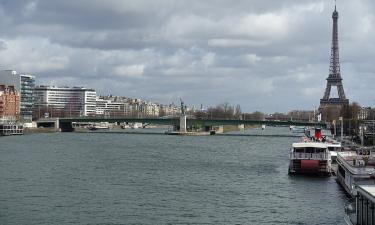Vladimir Baranov-Rossine's works on display at Treatyakov Gallery and Russian Museum
The works of Vladimir Baranov-Rossine /1888-1944/, the famous inventor and avant-gardist painter whose name was forgotten in his homeland, are on display at the State Tretyakov Gallery beginning Thursday. The exposition, which unites more than 100 works from the collection of the State Russian Museum and from private collections based in France and Great Britain, moved to Moscow from St. Petersburg.
Rossine's best-known inventions, color music and camouflage coloring for military uniforms, were born after an endless series of experiments. A member of the avant-gardist youth of the 1910s, Rossine created the most unusual works by blending different styles, including sezannism, cubism, abstractionism and surrealism. As though trying to follow the ancients' advice to change the style as often as possible, Baranov, a native of the Tavria province, often changed names, cities and fields of activity. His career as a painter began in Odessa, continued at St. Petersburg's Academy of Arts, and ended in Paris, where he took on the pseudonym of Daniel Rossine.
Rossine's first personal exhibition was staged in Oslo, or Christiania as it was called then, in the years of World War I. It was in Oslo that Rossine introduced his color music, which he said had been inspired by symbolists and Alexander Skryabin. Just like the composer, who included a "color line" in the score for his 1910 composition, "Prometheus," the painter wanted to blend color and sound. In the long run, he constructed an optophonic piano -- an instrument whose keys produced not only sound but also color, which was instantly reflected on a screen. Created in 1914 and displayed to the public during the world's first color music shows at the Bolshoi Theatre and at Meyerhold's, the optophone was patented ten years on in Paris, the city where Baranov settled after fleeing persecutions at home. Before that, there had been several turbulent years in Russia, during which he had decorated Petrograd with Kustodiyev and Petrov-Vodkin in advance of the first anniversary of the October revolution, and worked for the Department of Fine Arts of People's Commissariat of Education and for the Faculty of Fine Arts at the VKhUTEMAS. His life ended tragically in the Nazi concentration camp Osviecim.
Baranov-Rossine's heritage is kept in St. Petersburg's Russian Museum, New York's Museum of Modern Art, Paris' Pompidou Center, and in private collections.
Subscribe to Pravda.Ru Telegram channel, Facebook, RSS!





